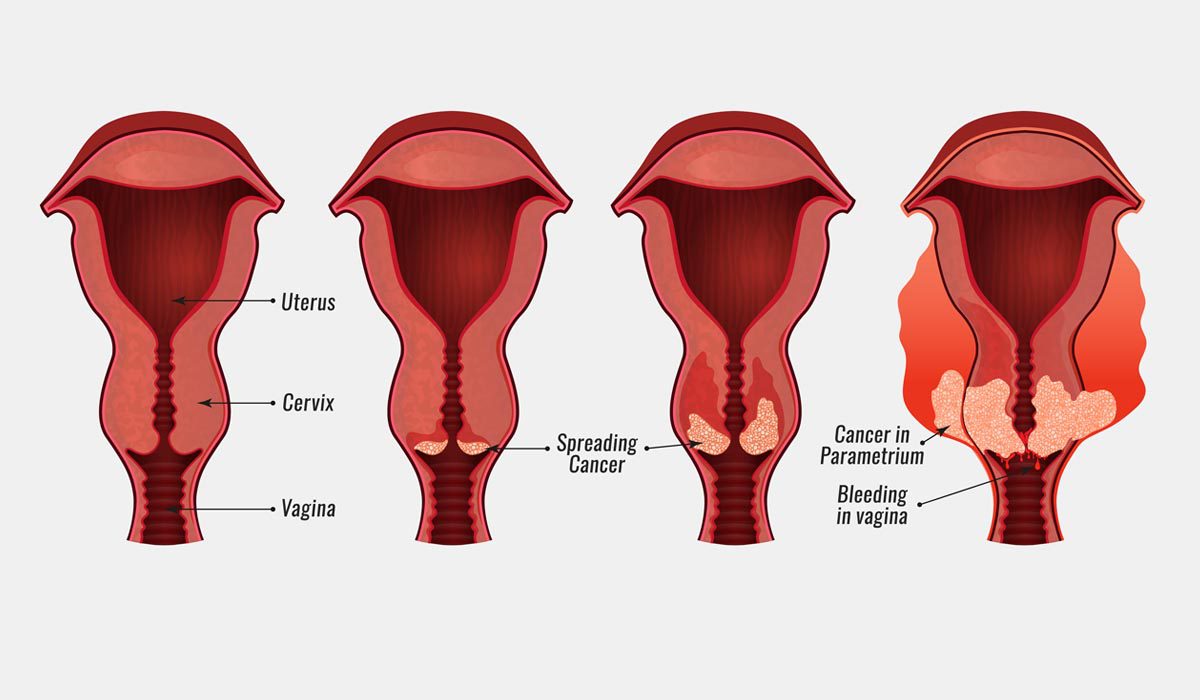Cervical Dysplasia
Cervical dysplasia is a precancerous condition. People often feel concerned when diagnosed with cervical dysplasia, and many believe it’s the beginning of cancer. However, it’s not true; cervical dysplasia is treatable, and the right treatment can prevent it from getting cancerous.
What is Cervical Dysplasia?
Cervical dysplasia is a precancerous condition where cells abnormally grow on the surface of the cervix. The cervix is attached to the top part of the vagina and acts as the opening to the uterus. It is also known as cervical intraepithelial neoplasia, or CIN, where “intraepithelial” means abnormal cells. The abnormal growth is seen on the epithelial tissue of the cervix and it never grows past the epithelial layer.
Symptoms of Cervical Dysplasia
Sadly, cervical dysplasia has no clear symptoms, and it is usually diagnosed during regular screening. Cervical dysplasia is caused by a common virus called the Human Papillomavirus (HPV), which is contracted through sexual contact. Every year, approximately 250,000 to one million women in the US get affected by cervical dysplasia. Cervical dysplasia can affect women of any age, but it usually affects those between the ages of 25 and 35. The right management and care can prevent the condition from progressing to cancer.
Diagnosis of Cervical Dysplasia
Cervical dysplasia is diagnosed during a regular Pap smear. If the healthcare provider notices an unclear pap smear that reveals abnormal cells, they may recommend you for colposcopy. The test is done in your doctor’s clinic using an instrument called colposcope. The light at the end of the instrument help in checking abnormal cells in the cervix and vaginal walls. The doctor may collect a tissue sample through biopsy if abnormal cells are noticed.
Cone biopsy or loop electrosurgical excision technique (LEEP) are procedures used to rule out the presence of invasive cancer. During a cone biopsy, a piece of tissue in the shape of a cone is removed for laboratory analysis. The doctor uses a tiny, low-voltage electrified wire loop to cut off aberrant tissue during LEEP. The tissues are then sent for examination in a laboratory. An HPV DNA test is recommended for women susceptible to cervical cancer, which can pinpoint the HPV strains known to be responsible for cervical cancer.
Causes of Cervical Dysplasia
The condition is caused by HPV (Human Papilloma Virus). The virus is one of the most common ones found in sexually active men and women. Generally, the human system is strong enough to get rid of the virus. There are over 100 strains of the HPV virus; usually, HP-16 and HP-18 strains cause cervical dysplasia. According to scientific estimates, more than 75% of cisgender women who engage in sexual activity can get an HPV infection at some point. The disease frequently disappears without leaving behind any lasting effects. Cervical dysplasia is an uncommon condition that develops over time as aberrant cells proliferate.
HPV is typically transmitted from one person to another during sexual contact, such as oral sex, anal sex, or vaginal sex. However, any skin-to-skin contact with an infected person might also spread it. The virus has the ability to travel from one area of the body to another after becoming established, including the cervix.

Treatment of Cervical Dysplasia
The treatment of the disease depends on multiple factors. Doctors mostly look for the severity of the condition, age, health, etc. Repeat Pap tests and ongoing monitoring are enough for minor cervical dysplasia. Unless mild cervical dysplasia has lasted for two years, advanced to moderate or severe cervical dysplasia, or there are additional medical issues, there is no requirement for treatment. Therapy is typically not required for older women with minor cervical dysplasia. The doctor may advise you to get a Pap test every two years. Other recommended treatments for this disease are cryosurgery, electrocauterization, and laser surgery.
Prevention of Cervical Dysplasia
Avoiding HPV is the only approach to stopping cervical dysplasia. By receiving routine Pap smears, people who already have an HPV infection or are susceptible to the disease can lower their chance of getting cervical cancer. Regular Pap screenings help diagnose cervical dysplasia and stop it from developing into cancer, even though they cannot prevent cervical dysplasia.
Apart from regular Pap tests, other modes of prevention are:
- Get Vaccinated: The best defense against HPV and cervical dysplasia is vaccination. The FDA has approved Gardasil, Gardasil-9, and Cervarix to help prevent infection with some kinds of HPV, including the types that lead to the majority of instances of cervical cancer. Discuss the potential advantages of getting vaccinated with your healthcare physician if you are between the ages of 27 and 45. Cervical dysplasia or pre-existing HPV cannot be treated; however, in some circumstances, the vaccine may stop recurrent infections.
- Practice safe sex: When avoiding sexual contact is impossible, condoms are the best prevention mechanism. Dental dams and condoms are recommended by doctors while having intercourse or oral sex. Limit the number of sexual partners.
- Avoid or restrict the usage of tobacco products: If you smoke or use tobacco, you are at risk and more likely to develop cervical dysplasia from an HPV infection.
When should I see my healthcare provider?
Any woman between the age of 25 to 45 must get an annual Pap test, and older women can ask their healthcare provider for the test frequency. In case there is abnormal cell growth, follow your doctor’s advice. Following a cervical dysplasia diagnosis, your doctor may monitor your health to ensure the cells don’t recur or develop into cancer. You might undergo Pap testing and HPV tests more frequently.
Why 7DMC?
We are one of the top multi-specialty clinics in Dubai, with a specialized department of Obstetrics & Gynecology. Our certified obstetrician and gynecologist provide qualified advice to address any health issues related to women. We are committed to offering comprehensive procedures for optimized results.
It is advisable that women in all age groups must see a gynecologist for an annual exam whenever they have any complaints or symptoms like pelvic, vulvar, or vaginal pain or unusual uterine bleeding. At 7DMC Obstetrics & Gynecology Clinic, our seasoned specialists offer treatments for women’s health issues, including hysterectomy, pap smear, colposcopy, endometriosis, fibroids, urinary incontinence, infections (UTI, Pelvic Inflammatory Disease), prolapse, premenstrual syndrome, contraception, and HPV vaccine, among others. Here, we offer gynecology services for both inpatients and outpatients.
Reference:
familydoctor.org/condition/cervical-dysplasia
https://www.nhs.uk/conditions/cervical-cancer/
- CATEGORIES : Obstetrics and Gynecology





